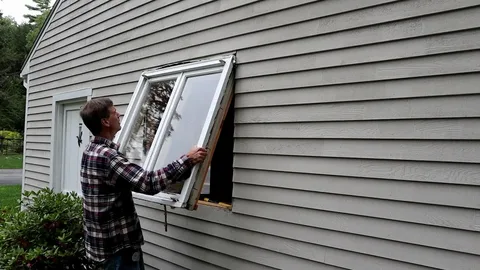Introduction
Tired of drafts, fogged panes, and rising heating bills? Replacing old windows is one of the most impactful upgrades you can make—for comfort, curb appeal, and energy savings. With a little know-how, proper tools, and attention to detail, you can tackle this project confidently. This guide walks you through how to replace old windows, helping you transform your space while saving money on your energy bills.

Why Replace Old Windows?
Upgrading windows isn’t just about looks—it’s smart economics:
- Switching from single-pane to energy-efficient windows can slash energy bills by $125 to $465 annually—about 12–13% off total energy costs ($101–$583 depending on your climate). HOMEiA.comUnited Plate Glass of Sunbury, PA
- Even upgrading from old double-pane units offers savings of $27–$197 per year. HOMEiA.comUnited Plate Glass of Sunbury, PA
- Additional benefits include reduced fading of carpets and furniture (thanks to UV-blocking glass), better indoor comfort, and a potential 78% recoup on window costs when selling your home. United Plate Glass of Sunbury, PA
Step-by-Step: How to Replace Old Windows
1. Measure Accurately
Start with precise measurements of your current window opening:
- Measure width at top, middle, and bottom; use the smallest measurement, minus 1/8‑inch.
- Repeat vertically from left, center, and right.
- Write down these figures for ordering replacement windows. Forbes
2. Remove the Old Window
- Carefully pry off interior stops and parting strips.
- Remove the lower sash, then the upper sash.
- Detach the jamb liners using a flat bar. This Old House
This mirrors Better Homes & Gardens’ method, ensuring safe removal without damaging surrounding trim.
3. Prepare the Window Frame
- Scrape away peeling paint or damaged putty.
- Use exterior-grade wood putty to patch holes, sand smooth, then prime and paint.
- Remove old sash weights and add insulation behind the frame.
- Drill sill and head jamb holes, then inject low-expansion foam for sealing—avoid overfilling to prevent frame warping. This Old House
4. Dry-Fit the Replacement
- Clean debris from the opening.
- Insert the new window without fastening to verify sizing.
- Adjust as needed. Forbes
5. Install and Secure the Window
- Apply elastomeric caulk to sill and stop edges.
- Place the window in the opening from inside.
- Secure with screws through the top jamb, leaving them slightly loose.
- Insert shims under sill and behind jambs to properly square the window; then fully fasten. This Old House
6. Final Touches
- Trim shims flush and caulk edges for a clean finish.
- Reinstall stops, fill nail holes with putty, and repaint to match.
- Touch up trim and ensure proper seal and operation. Better Homes & Gardens
Choose Energy-Efficient Windows
For long-term value, opt for modern energy-efficient options:
- Double or triple glazing with Low-E coatings and argon gas can reduce heat transfer significantly—by up to 50%. Optimal Windowswiseenergy.net
- These upgrades can lower energy usage by 25–30%, cutting utility bills substantially. Optimal WindowsPlanet Pristine
- Ensure you’re using Energy Star-certified products to maximize benefits. Planet Pristinecentralparealty.com
Tax Credits & Incentives
Thanks to the Inflation Reduction Act, homeowners may qualify for a 30% federal tax credit (up to $600) for energy-efficient window purchases installed through 2032. Better Homes & Gardens
DIY vs Hiring a Pro
Replacing windows yourself can save on labor, but weigh these factors:
- Complex installations or historic homes often benefit from professional expertise.
- Experts ensure proper sizing, airtight installation, and code compliance.
- Forbes recommends comparing multiple quotes and prioritizing providers with strong warranties and reputations. New York Post
Maintenance Tips After Replacement
- Inspect seals and caulking annually and replace if cracking appears.
- Clean glazing and tracks at least twice a year.
- Check for condensation between glass panes—indicates seal failure requiring service or replacement.
Conclusion
Replacing old windows is more than a cosmetic upgrade—it’s an investment in energy savings, home value, and comfort. By following a methodical approach—from accurate measuring and proper removal to careful installation and finishing—you can achieve sleek, efficient, and long-lasting results. Choose energy-efficient models, take advantage of tax incentives, and don’t shy from hiring pros where needed. Ready for clearer views and lower bills? Let’s replace those old windows smartly and successfully.